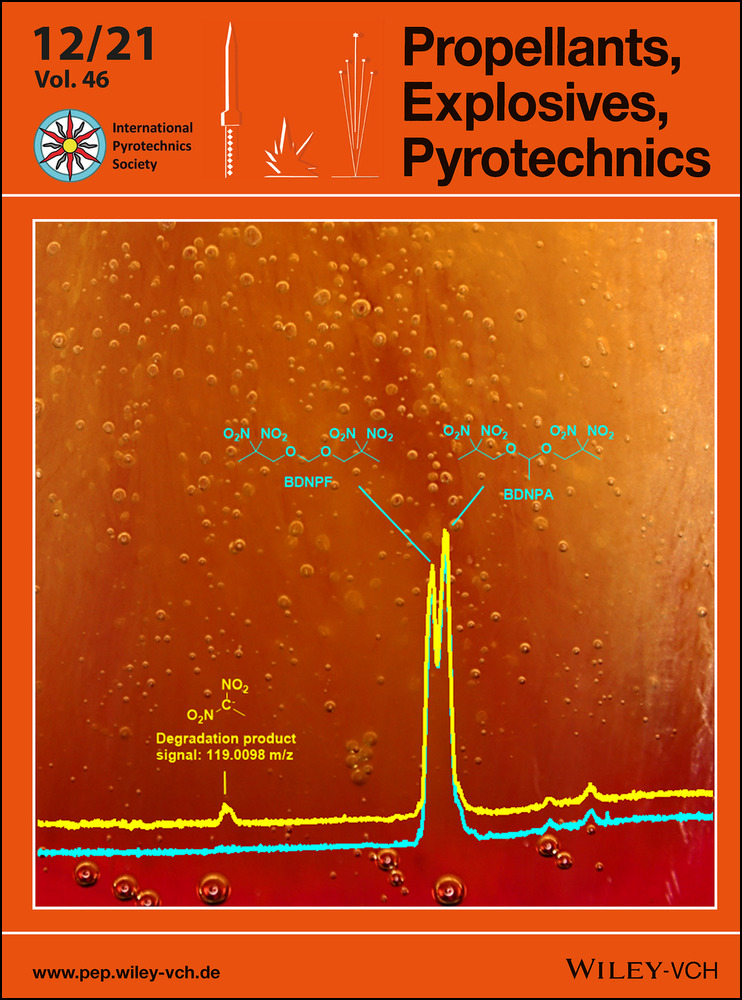Validation of CL-20-based Propellant Formulations for Photopolymerization 3D Printing
Abstract
The combustion performances of propellants depend on the geometry and the composition. Three-dimensional (3D) printing or additive manufacturing provides a feasible and effective way to fabricate propellants according to interior ballistic requirements. The main objective of this paper is to improve the properties of 3D printed propellants in terms of energy content and combustion behavior. Three propellant formulas, which contain polyurethane-acrylic acid resin as binder and hexanitrohexaazaisowurtzitane (CL-20) as energetic filler, were fabricated by extrusion material 3D printing. The formulas with the force constant of 1107.43–1209.44 J/g were designed. The combustion behaviors of designed formulas, such as the maximum pressure, burn time, and burn rate, were characterized by closed bomb tests. Meanwhile, the curing time, printability, and inner structure of these formulas were also demonstrated to understand the 3D extrusion printing of propellants better.
Open Research
Data Availability Statement
The data that support the findings of this study are available from the corresponding author upon reasonable request.




